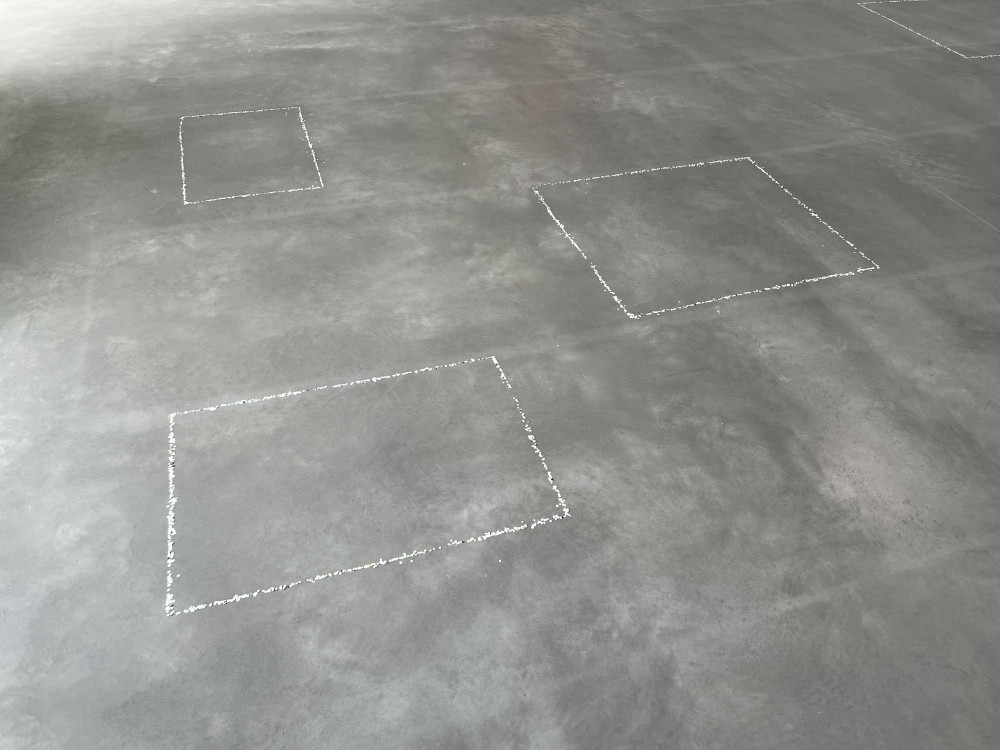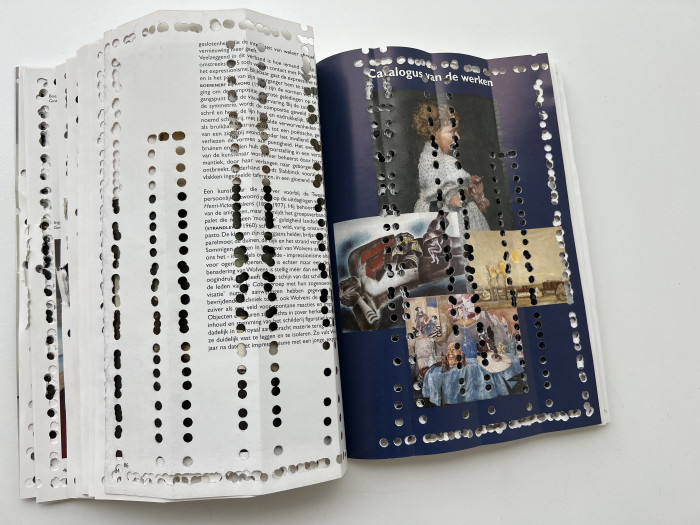Stukjes Stukjes en dingen, Dingen Dingen en stukjes / Territoire confetti
Territoire confetti (1993 - ...) is a protocol for a sculptural gesture, in which chance and determination coexist. It consists of producing confetti with a tabletop perforator using found and/or chosen papers taken from the exhibition venue, such as catalogue, posters, visitor's guides. This could also be the institution's or gallery's archives or simply what is already present in the hole punches used in the offices. The confetti produced or collected in this way is displayed directly on the floor. The work can be displayed in different forms at different distances in one or more exhibition rooms. The arrangement of the confetti is usually based on the idea of an object and therefore often takes on a geometric appearance. However, when the piece is made by someone other than the artist, Tuerlinckx does not give any precise indications. The installation, which inevitably depends on the exhibition context, is extremely fragile. It is possible to recreate the form(s) every day or to allow the work's natural entropy to unfold. Finally, the perforated material can be exhibited in the same room as the confetti shapes or elsewhere in the building. Exceptionally, the confetti shapes can be exhibited without the perforated material and vice versa.
Territoire confetti shows the fundamental relationship of objects to space and movement. It is movement in space that allows us to discover different points of view, to have different experiences. It is also what allows the work to exist but also to disappear. The gesture of perforation at the heart of this work is recurrent in the artist's practice, not only in paper media but also in the architecture of the places where she exhibits, and even in the public space. In each instance, it is a way of interrupting and challenging continuity, permanence, and authority. In this case, the artist transforms the official discourse or history of the institution into a tool for celebration.
This work dates back to the early 1990s. Marked by his encounter with Joëlle Tuerlinckx during her 1993 exhibition in the Antichambres of the Palais des Beaux-Arts in Brussels, where she presented a very fragile piece that was quickly destroyed, Chris Dercon invited her to take part in the group exhibition “WATT” at Witte de With in Rotterdam the following year. Following her exchanges with Dercon about the then accidentally ephemeral nature of her work at the Palais des Beaux-Arts and inspired by the Carnival taking place at the same time in Rotterdam, Joëlle Tuerlinckx conceived a work in the form of confetti. As the “WATT” exhibition took place at two venues—the Kunsthalle Rotterdam and Witte de With—she created two versions of the piece: one with real confetti, identical to that thrown in the streets during the party, and the other with the fragments of paper collected in hole punches. This was the first occurrence of the piece, which the artist re-enacted a few months later for her solo exhibition at Witte de With, entitled "pas d’histoire, pas d’histoire". Since then, the piece has been reactivated several times.


